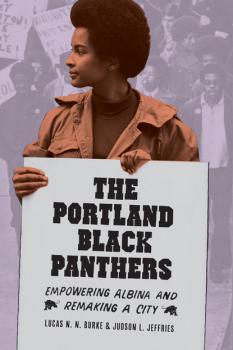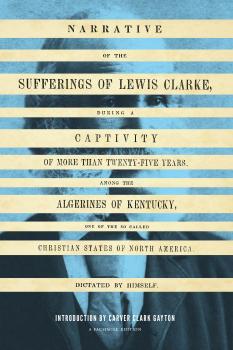V. Ethel Willis White Books
Скачать книги из серии V. Ethel Willis White BooksThe Portland Black Panthers
Portland, Oregon, though widely regarded as a liberal bastion, also has struggled historically with ethnic diversity; indeed, the 2010 census found it to be “America’s whitest major city.” In early recognition of such disparate realities, a group of African American activists in the 1960s formed a local branch of the Black Panther Party in the city’s Albina District to rally their community and be heard by city leaders. And as Lucas Burke and Judson Jeffries reveal, the Portland branch was quite different from the more famous—and infamous—Oakland headquarters. Instead of parading through the streets wearing black berets and ammunition belts, Portland’s Panthers were more concerned with opening a health clinic and starting free breakfast programs for neighborhood kids. Though the group had been squeezed out of local politics by the early 1980s, its legacy lives on through the various activist groups in Portland that are still fighting many of the same battles.Combining histories of the city and its African American community with interviews with former Portland Panthers and other key players, this long-overdue account adds complexity to our understanding of the protracted civil rights movement throughout the Pacific Northwest.
Free Boy
Free Boy is the story of a 13-year-old slave who escaped from Washington Territory to freedom in Canada on the West's underground railroad.When James Tilton came to Washington Territory as surveyor-general in the 1850s he brought with his household young Charles Mitchell, a slave he had likely received as a wedding gift from a Maryland cousin. The story of Charlie's escape in 1860 on a steamer bound for Victoria and the help he received from free blacks reveals how national issues on the eve of the Civil War were also being played out in the West.Written with young adults in mind, the authors provide the historical context to understand the lives of both Mitchell and Tilton and the time in which the events took place. The biography explores issues of race, slavery, treason, and secession in Washington Territory, making it both a valuable resource for teachers and a fascinating story for readers of all ages.
Carl Maxey
Carl Maxey was, in his own words, �a guy who started from scratch – black scratch.� He was sent, at age five, to the scandal-ridden Spokane Children's Home and then kicked out at age eleven with the only other �colored� orphan. Yet Maxey managed to make a national name for himself, first as an NCAA championship boxer at Gonzaga University, and then as eastern Washington's first prominent black lawyer and a renowned civil rights attorney who always fought for the underdog.During the tumultuous civil rights and Vietnam War eras, Carl Maxey fought to break down color barriers in his hometown of Spokane and throughout the nation. As a defense lawyer, he made national headlines working on lurid murder cases and war-protest trials, including the notorious Seattle Seven trial. He even took his commitment to justice and antiwar causes to the political arena, running for the U.S. Senate against powerhouse senator Henry M. Jackson.In Carl Maxey: A Fighting Life, Jim Kershner explores the sources of Maxey's passions as well as the price he ultimately paid for his struggles. The result is a moving portrait of a man called a �Type-A Gandhi� by the New York Times, whose own personal misfortune spurred his lifelong, tireless crusade against injustice.
Seattle in Black and White
Seattle was a very different city in 1960 than it is today. There were no black bus drivers, sales clerks, or bank tellers. Black children rarely attended the same schools as white children. And few black people lived outside of the Central District. In 1960, Seattle was effectively a segregated town.Energized by the national civil rights movement, an interracial group of Seattle residents joined together to form the Seattle chapter of the Congress of Racial Equality (CORE). Operational from 1961 through 1968, CORE had a brief but powerful effect on Seattle. The chapter began by challenging one of the more blatant forms of discrimination in the city, local supermarkets. Located within the black community and dependent on black customers, these supermarkets refused to hire black employees. CORE took the supermarkets to task by organizing hundreds of volunteers into shifts of continuous picketers until stores desegregated their staffs. From this initial effort CORE, in partnership with the NAACP and other groups, launched campaigns to increase employment and housing opportunities for black Seattleites, and to address racial inequalities in Seattle public schools. The members of Seattle CORE were committed to transforming Seattle into a more integrated and just society.Seattle was one of more than one hundred cities to support an active CORE chapter. Seattle in Black and White tells the local, Seattle story about this national movement. Authored by four active members of Seattle CORE, this book not only recounts the actions of Seattle CORE but, through their memories, also captures the emotion and intensity of this pivotal and highly charged time in America�s history.For more information visit: http://seattleinblackandwhite.org/
Better than the Best
In these engaging and forthright interviews, thirteen African American athletes talk about how they endured through pain, loneliness, and rejection to become champions. In sports as diverse as football and fencing, wrestling and track and field, these men and women triumphed over the odds to become better than the best. Their legacy is in their accomplishments and in their determination to continue contributing to the societal transformation their efforts helped make possible.






